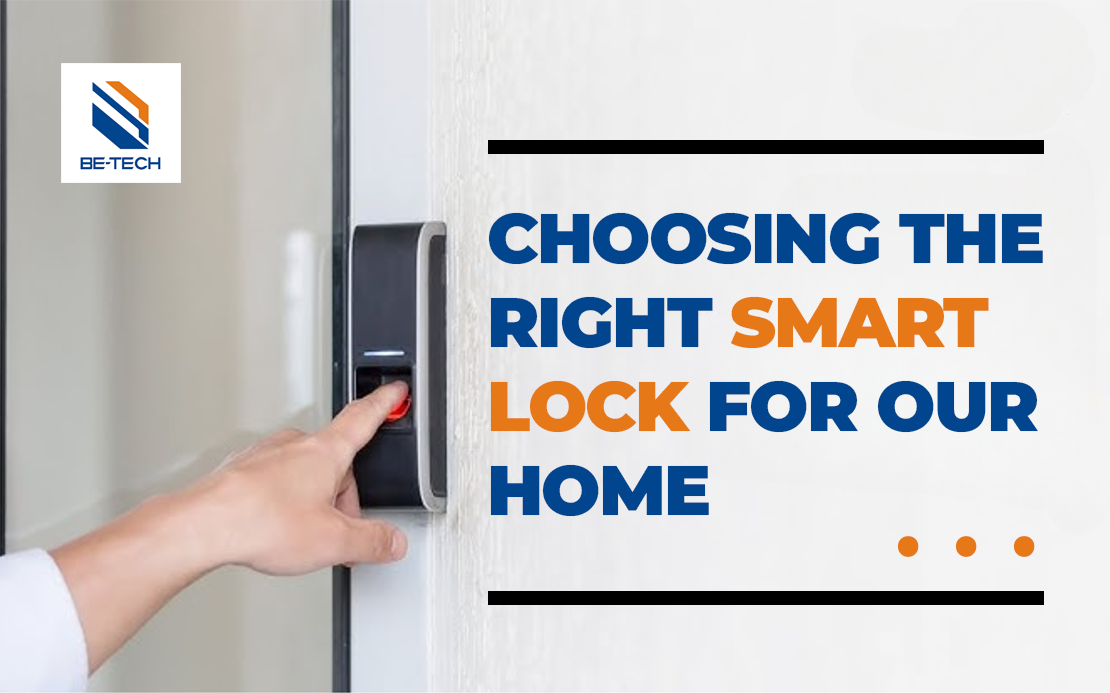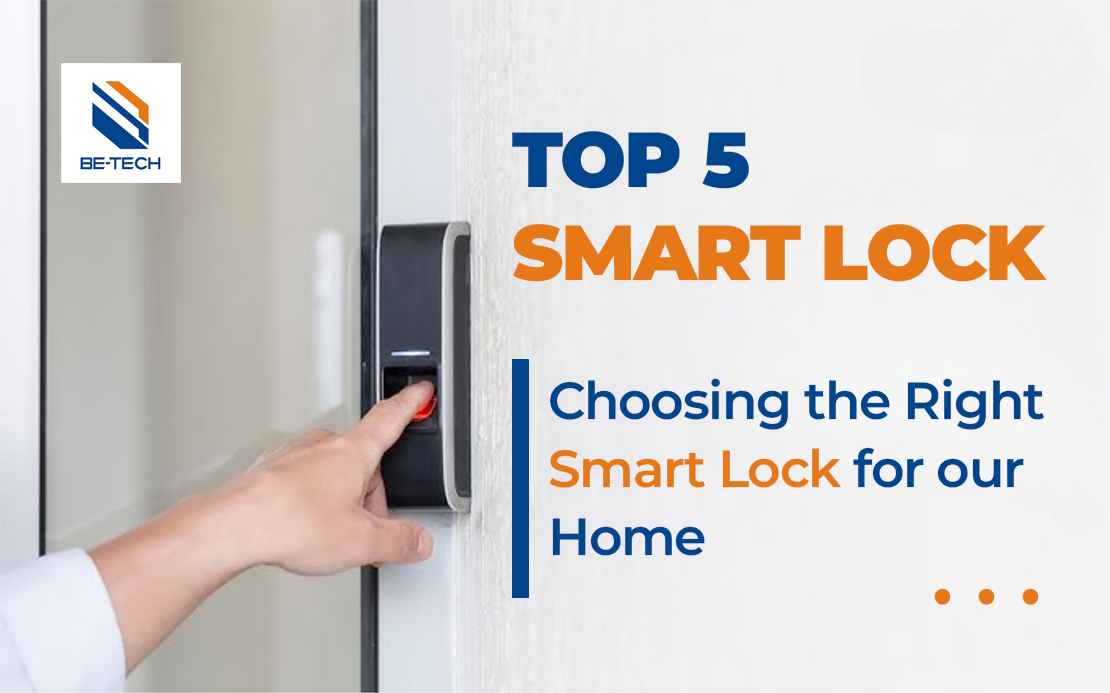
Choosing the Right Smart Lock for Your Home
In today’s smart home revolution, security and convenience go hand in hand. One of the simplest yet most powerful upgrades you can make is replacing your traditional door lock with a smart lock.
But with so many options flooding the market, how do you choose the right smart lock for your home?
In this guide, Betech breaks down everything you need to know, from types and features to security protocols and compatibility, so you can make the most informed choice.
What Is a Smart Lock?
A smart lock is an electronic locking mechanism that allows you to control access to your home through a smartphone, keypad, voice assistant, or other connected device.
Unlike traditional locks, smart locks offer remote access, keyless entry, real-time alerts, and even temporary access codes for guests or deliveries.
Why Upgrade to a Smart Lock?
Smart locks are more than just a tech trend, they’re a practical upgrade to enhance both home security and user convenience. Here’s why more homeowners are making the switch:
- Convenience: No more lost keys or lockouts.
- Security: Encrypted access, audit trails, and instant notifications.
- Integration: Works with smart home systems like Alexa, Google Assistant, or Apple HomeKit.
- Access Control: Create virtual keys or PINs for family, friends, or service providers.
Factors to Consider Before Buying a Smart Lock
Choosing the right smart lock involves more than picking the most expensive or high-tech option. Here are key considerations to guide your decision:
1. Type of Lock Mechanism
There are two main types of smart locks based on how they interact with your existing hardware:
- Deadbolt Replacements: Completely replace your current deadbolt and often include both internal and external components.
- Deadbolt Adapters: Attach to your existing deadbolt, making installation easier and ideal for renters.
2. Connectivity Options
Smart locks use different methods to communicate with your smartphone or hub. Each has pros and cons:
- Bluetooth: Good for short-range use and conserves battery, but lacks remote access.
- Wi-Fi: Offers remote control and real-time notifications, but may consume more power.
- Z-Wave/Zigbee: Integrates with a broader smart home system via a central hub; more secure but needs a hub to function.
- NFC or RFID: Common in commercial settings or luxury homes for tap-based access.
3. Power Source and Battery Life
Most smart locks run on AA or CR123 batteries. Look for features like low-battery notifications or emergency backup access, such as a physical key or USB-C charging.
4. Security Features
A lock is only as good as its security measures. Ensure your smart lock includes:
- Encryption: AES-128 or AES-256 encryption for secure communication.
- Tamper Alerts: Notifies you if someone attempts to force the lock.
- Auto-lock and Unlock: Automatically locks when you leave and unlocks upon approach.
- Two-Factor Authentication (2FA): Adds a second layer of protection.
5. User Access and Management
Choose a smart lock that allows:
- Custom Access Codes
- Time-Based Access
- Remote Locking and Unlocking
- Activity Logs to monitor who enters and when
6. Installation and Compatibility
Not all smart locks are created equal. Ensure compatibility with your:
- Door Type and Size
- Smartphone OS (iOS/Android)
- Smart Home Ecosystem (e.g., Alexa, Google Home, SmartThings)
- Pro Tip: Always check door thickness, backset length, and lock orientation before purchase.
Top Smart Lock Brands in 2025
Here are some of the top-performing smart lock brands trusted by experts and homeowners alike:
August Smart Lock Pro
- Retrofit installation
- Supports Bluetooth, Wi-Fi, and Z-Wave
- Auto-unlock and DoorSense
Yale Assure Lock 2
- Sleek design with touchscreen keypad
- Works with Alexa, Google, and Apple HomeKit
- Long battery life
Schlage Encode Plus
- Built-in Wi-Fi and Apple Home Key compatibility
- ANSI/BHMA Grade 1 certified for top security
- Built-in alarm technology
Ultraloq U-Bolt Pro
- Fingerprint recognition + keycode + mobile app
- Works offline with anti-peep code feature
- Dual battery system
Pros and Cons of Smart Locks
Here’s a quick overview to help you weigh the decision:
| Pros | Cons |
| Remote access and control | Expensive compared to traditional locks |
| Keyless convenience | Dependent on battery life |
| Enhanced security and logs | Potential hacking risks (if insecure) |
| Integration with smart ecosystems | Requires occasional firmware updates |
| Regional Study | 5 points |
| Skilled Partner/Single Status | Up to 10 pts |
Safety and Maintenance Tips
- To ensure your smart lock functions optimally for years to come:
- Update firmware regularly to patch security vulnerabilities.
- Change access codes frequently.
- Clean the device and keypad regularly to prevent buildup or wear.
- Monitor battery levels and keep spares handy.
Make a Smart Investment in Home Security
Smart locks are transforming the way we protect and access our homes. While it’s easy to get overwhelmed by features and brands, the right smart lock should match your lifestyle, offer strong security, and integrate smoothly into your existing setup.
By following the tips outlined in this guide, you’ll be well-equipped to make a smart investment in your home’s future.


